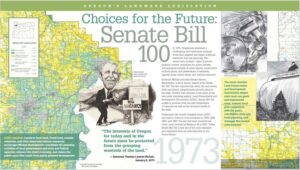
05.22.21
Civic Engagement Brown Bag Session 11: Understanding and Engaging in Land Use Decisions
By bgoodwinLand use decisions are the actions with the greatest potential to affect a community's land and quality of life. In the words of the Oregon Supreme Court, a land use decision is one that "has a significant impact on present or future land uses.” Yet most people are unaware of how these decisions are made, who makes them, or even that it’s happening at all.
How can we stay informed about what is happening on the land around us? How can we make our voices heard in the decision process?
We are grateful that Alexis Biddle from 1000 Friends of Oregon was able to join us to discuss Oregon's unique land use planning process and how citizens can get involved! To watch the live Zoom recording, scroll down to the bottom of the screen. Read below for highlights from our discussion.
How did Alexis get into this line of work?
Alexis became passionate about environmental issues while in college. He considered studying the science of climate change, but came to feel that we already know enough about its devastating effects…we just need more people doing something about it. He enrolled in law school to tackle the problem but took time off after getting disillusioned when he saw there were not enough laws in existence to actually litigate issues concerning climate change. While working as a taxi driver during his time off, he saw firsthand the inequities that are only exacerbated by bad land use planning. He recognized the close connection between social problems and environmental problems, such as the high financial cost and carbon footprint of living far from a grocery store. This insight inspired him to not only return to school to finish his law degree, but to simultaneously obtain a master’s degree in Community and Regional Planning, both from the University of Oregon. He has worked with transit districts, city and state planning departments, and as a transportation consultant. His current dream job at 1000 Friends has allowed him to follow his passion working on land use and transportation issues to serve residents of communities across the state.
The Story of Oregon’s Land Use Policy:
Oregon has one of the most robust land-use planning policies in the country. In the 1960’s, alarm bells started to ring with the rapid development that was taking place in the Willamette Valley. Studies showed that if development continued unchecked, all usable farmland would be consumed within the next 100 years. Governor Tom McCall and the state legislature responded by passing Senate Bill 100 in 1973. The most well-known features are the statewide planning goals, which offer guidelines for topics such as citizen involvement and natural resource protection, and the use of Urban Growth Boundaries (UGB’s) which work to protect farm and forest land. When we do develop outside of urban areas, we only do so where the soils are the least productive.
These protections are the strongest in the country and make us very deliberate about how we grow and how we protect our resource land. Oregon Senate Bill 100 created an institutional structure for statewide planning that required every Oregon city and county to prepare a comprehensive plan in accordance with the general state goals. While preserving the principle of home rule and local responsibility for land-use decisions, it established and defined a broader public interest at the state level. Local governments receive much more pressure from developers, so having a strong state authority on land use can help prevent reckless development.
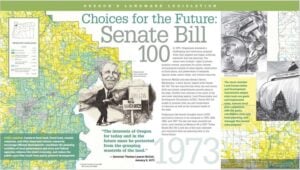
What exactly is 1000 Friends of Oregon?
Former Governor McCall knew there would not be enough resources at state level to enforce these new policies, so he created 1000 Friends of Oregon to help uphold the mission. This non-profit works with Oregonians to enhance quality of life by building livable urban and rural communities, protecting family farms and forests, and conserving natural areas. Essentially, they act as a “watch dog” to make sure that local governments are compliant with statewide planning goals.
In the early days, they were a very litigious group, relying on lawsuits to overturn development plans. These days they work more collaboratively with local governments and stakeholders, focusing more on a productive decision making process instead of fighting the results of bad decisions.
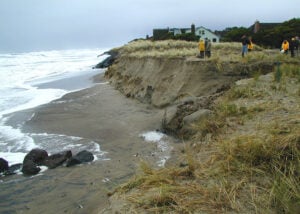
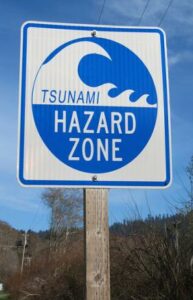
Land Use Decisions
Land use decisions are made at local level, but reviewed at the state level. While Senate Bill 100 is an overarching structure in which land use decisions are made, but it is not a decision itself.
There are several types of decisions, from simple, quick decisions that planning directors can make without giving public notice (such as an application to change a building facade) to decisions that affect multiple properties, require public meetings, and may result in comprehensive plan amendments (such as rezoning an area to become a commercial disctrict). A more complicated decision usually goes to the local planning commission and city council. Commissions will make a recommendation and the council will make a final adoption. However, this level of decisions often involves more subjectivity as well as heated political and emotional reactions. The decision process then becomes multi-layered.
That's when it's time for some alphabet soup!
Understanding DLCD, LCDC, PAPA, and LUBA
The Department of Land Conservation and Development (DLCD) is responsible for making Oregon’s statewide land use program work for communities in all parts of the state. DLCD does this through partnerships with cities and counties, state development agencies (Housing and Community Services, Transportation and Business Oregon) and natural resource agencies (Agriculture, Forestry, Water Resources, State Lands, Environmental Quality and Fish and Wildlife) as well as citizens.
The department is guided in policy development by the Land Conservation and Development Commission (LCDC) whose members are appointed by the governor.
Each city has a “comprehensive plan,” which is essentially like the constitution of local planning. DLCD reviews the plans, and any revisions or updates to the plans, to make sure they align with the goals. A plan is said to be "acknowledged" when LCDC approves it. The plan then becomes the controlling document for land use in the area it covers.
The "comp plan," as it's informally called, has three main elements:
- Inventory of local lands uses and resources;
- Goal and policy statements that indicate local objectives over a specific period and guidance on how to achieve them; and
- Detailed map that shows desired uses, or zones, for each property throughout the entire locale.
Changes to the plan are a big deal. If a city is enacting a large amendment to its comprehensive plan, they need to tell the state and provide notice to the public. This is called a Post Acknowledgement Plan Amendment (aka PAPA). The PAPA needs to show that the plan still meets all 19 of Oregon’s statewide planning goals. There are four goals that particularly apply to the coast. The Oregon Coastal Alliance (ORCA) is an excellent resource for land use planning and zoning on the coast.
DLCD publishes the submitted PAPA's, and that gives us a clue if a city is trying to do something we should pay attention to. The DLCD also provides technical assistance to smaller cities who do not have designated planners. After a city has created a PAPA, DLCD reviews it and then sends it to LCDC who in turn has the authority to deny the amendment if it does not meet statewide planning goals. If a city fails to take an action to uphold an approved comp plan, a resident or organization can ask for an enforcement action from LCDC. If the city is being obstinate, LCDC can actually intervene and write code for the city.
If there is continued disagreement, the decision then moves to the Land Use Board of Appeals (LUBA). The Oregon Legislature created the LUBA in 1979 as an agency with exclusive jurisdiction to review appeals of land use decisions made by cities, counties, districts and state agencies. Prior to LUBA’s creation, appeals of land use decisions were heard in 36 different county circuit courts. The creation of LUBA streamlined the process for resolving land use disputes and also promoted a consistent interpretation of state and local land use laws. LUBA’s decisions are reviewable by appeal to the Court of Appeals. LUBA is the first court of its kind in the United States. The governor appoints the three-member board to serve four-year terms, subject to confirmation by the Oregon Senate. Each board member must be a member of the Oregon State Bar. LUBA’s secondary mission is to publish its orders and opinions which citizens, decision-makers and participants in land use processes can use to guide future land use decision-making.
When deciding a case, LUBA either affirms (approves) the local decision, reverses (overturns) it, or remands (sends back) the decision to the local government for further consideration. In some cases, a remand can be as effective as a reversal in defeating a proposal because flaws identified by LUBA can be very hard to remedy by the local government. A plan can also get remanded several times, which means that cases can go on for years and even decades. This is an important reminder that environmental groups must stay vigilant and commit to playing the long game.
For more information and a visual roadmap of the land use decision process, check out this detailed toolkit.
Coastal Planning
In 1972, the federal government passed the Coastal Zone Management Act (CZMA), which authorizes the Coastal Zone Management Program. The Oregon Coastal Management Program (OCMP), created in 1977, is the state of Oregon’s implementation of the national program. The OCMP follows a networked model that consists of multiple agencies with authority in the coastal zone. The DLCD serves as the lead administrative agency, and the National Oceanic and Atmospheric Association (NOAA) Office for Coastal Management provides funding and technical expertise. In addition, several federal agencies contribute to managing Oregon's coastal resources and an additional 10 state agencies, 33 cities, and 7 counties have enforceable policies that complete the program.
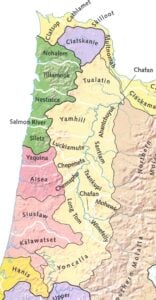 Four coastal tribes manage coastal resource lands and are critical partners in protecting the natural, cultural, and historic heritage of native people on the Oregon coast. These tribes include:
Four coastal tribes manage coastal resource lands and are critical partners in protecting the natural, cultural, and historic heritage of native people on the Oregon coast. These tribes include:
Confederated Tribes of Coos, Lower Umpqua and Siuslaw
Confederated Tribes of Grand Ronde
Confederated Tribes of Siletz Indians
Confederated Tribes of the Umatilla Indian Reservation
How can citizens stay informed about land use decisions?
- The Department of Land Conservation and Development (DLCD) has a notification system that you can easily set for the jurisdiction you want alerts for. These notifications will give you the name of the planner to contact and a summary of what they are planning to do (the PAPA).
- You can subscribe to alerts for plan amendments using this service
- You can contact your local planning office and ask for a staff report, which is written at an easily understandable level.
- You can attend a bi-monthly meetings with LCDC. You can attend virtually or go in person, and the meetings travel around the state. Every other one is in Salem, but the in-between sessions go all over the state including small towns.
- Keep an eye on planning commission agendas and check in with you local city councilors or county commissioners about the topics they plan to discuss.
- Find groups in your area that are monitoring issues, such as Oregon Coastal Alliance (ORCA) which sends out newsletters and updates.
What are ways citizens can be involved in decision making processes?
There are many committees at all levels of government that seek citizen members. There is a state level Citizen Involvement Advisory Committee with LCDC, which often has vacant seats for both specific districts as well as at-large positions. There are also various county and city committees- scan your local government websites to find them! There are no prerequisites to sit on these committees other than having interest and passion about the topic. Sitting on a local commission can be a lot of work but it is a huge contribution to your community! You might possibly be more informed about local land use issues than your elected official, so don't be afraid to make your voice heard.
Who do you contact if you are concerned about land use?
If you see something of concern in your community, call the local planning director, who is typically happy to answer questions and can redirect your questions to the appropriate sources.
